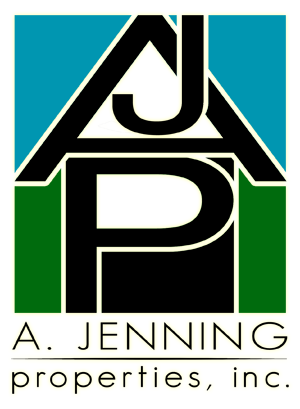Do you feel your association’s board meetings don’t get much accomplished? Are topics all over the place with few firm decisions being made? Are homeowners constantly interrupting, spending more of the meeting time speaking than the board does? Do your meetings just feel as if they are completely out of order?
If so we hope you find our 10 tips to running successful board meetings helpful. Exercising these tips should bring more order and productivity to your meetings, and create less headaches and confusion for your board.
1. Choose a public setting
In my experience as a community association manager, most board meetings take place in a board member’s home. When it comes to getting a meeting scheduled amongst the board it’s just the easiest and most flexible location. But it has drawbacks.
Whether homeowners attend your board meetings regularly or not, they are entitled to attend and observe. Many homeowners want to make a positive impact on their communities but aren’t capable of serving on the board. If board meetings are held in the home of a board member they don’t know personally they are less likely to attend than in a public setting.
A public setting can also mitigate interruptions that have a negative impact on the meeting. A phone ringing, other members of the household coming in and out, kids and family pets can all cause a distraction for the board as it tries to conduct its business.
Pick a public setting nearby the community, such as a library, school, fire station or a private room at a local restaurant. Most of these settings are freely available to community associations.
2. Stick to a schedule
Not every board meets monthly, but all boards should meet on a regular schedule. When meetings are infrequent and impromptu it tends to be in reaction of a lot of unresolved business backing up. These meetings tend to run long, and it poses a serious problem if any business items cannot be decided upon and require further follow-up. They also tend to be more difficult to schedule, as invariably it seems the manager or one of the board members is unavailable at a time everyone else can reach a consensus on.
Whether monthly, bimonthly, quarterly or at any interval, aim to meet on a regular basis. The best way to ensure this is accomplished is to decide upon the next meeting as the final piece of business for the current one. This ensures your board will meet with regularity, everyone is available and there is plenty of notice to prevent future scheduling conflicts. It will maintain a natural rhythm to the business of the association and ensure items are handled timely.
3. Prepare the agenda in advance
Passing out an agenda at a board meeting does little good if the board is just seeing it for the first time there. Many members will be uneducated on the topics for discussion, and the members who aren’t responsible for writing the agenda may have points they want to add. It’s just a recipe for chaos.
A draft agenda and any attachments should be distributed amongst the board members at least 5 days in advance. This gives everyone an opportunity to know which topics will be discussed so they can come to the meeting prepared to make informed decisions. If additional supporting documents are needed there remains a few days left to try to get them together. If a board member brings up a topic not on the agenda, it can easily be added and everyone can do their homework on it in advance so that one board member isn’t the only one educated on the topic.
The final agenda and its attachments may change several times over that 5+ day span, but by producing a draft early it gets the board on the same page and in a position to make informed decisions at the meeting.
4. Let homeowners speak first
Homeowners have no inherent right to speak at a board meeting; only to observe. But that’s a terrible policy for fostering community cooperation and involvement. However, board meetings are exactly that: BOARD meetings. It’s important the board conduct it’s scheduled business, and you can’t lose a significant portion of the meeting to homeowner comments. You also can’t conduct business in an orderly fashion if homeowners are chiming in with opinions as if they are board members throughout the meeting.
If your board meetings are regularly attended by homeowners, give them an opportunity to speak at the beginning of the meeting. Set an amount of time they are allowed to speak, and don’t interrupt them while they’re speaking. This allows them to address any concerns knowing that once the window closes they will be expected to observe without comment. If they are only there in the interest of their speaking topic, they will likely not stay for the rest of the meeting. This also acts as a deterrent to interruptions.
This transitions logically to my next tip…
5. Don’t make uninformed, rushed decisions
These types of issues are almost always brought up by homeowners, not the board, because you don’t know in advance what homeowners will choose to say during speaking time. A homeowner will make an impassioned plea to resolve an issue with a troublesome neighbor or quickly act to resolve a maintenance emergency, and the answer will seem logical and one which requires expedience.
Don’t take the bait. Thank the homeowner for their comments. Tell them the board will investigate the issue and place it on the agenda under New Business at the next meeting. Invite them to come and speak further to the issue and provide a status update at that meeting. But DON’T make a decision on a problem you’re just learning about for the first time.
Often the complaints are valid. But I can’t tell you how many times a major roof leak turned out to be a small clog causing a backup in a gutter. I can’t tell you how many times the neighbor’s horribly unkempt lawn turned out to be just a slightly higher grass length. Worst of all, I can’t tell you how many times I had to embarrass a board publicly and enrage a homeowner by telling them the issue the board just demanded action on is not within their legal jurisdiction or abilities.
Boards rush decisions to appease upset homeowners and prevent a possibly urgent issue from dragging out, but there is far more to be lost than gained when making a rushed decision. If it truly does sound urgent, go check out the issue immediately after the meeting concludes. But don’t act without all of the facts or you risk misdirection and overreaction, which can be costly in terms of dollars and goodwill within the community.
6. Follow Roberts Rules, or something close
You probably don’t need to hand every newly elected board member a copy of Roberts Rules, but you should practice some basic variation of it to keep order in your meetings and keep on task with the agenda.
Have either the president or the community association manager preside over the meeting. Stay in order on the agenda. At each piece of business, go around the table and allow each board member an opportunity to state an opinion, ask a question, etc or opt to pass on the opportunity. Once everyone has had a chance to speak and ask questions, TAKE A VOTE. This eliminates any confusion later on whether a topic was merely discussed or finally decided upon.
Again, you don’t need to be an expert parliamentarian or stick to rules of order as if they were law, but practicing some form order will keep your meetings organized, clear and productive.
7. Don’t abuse executive session
Generally speaking, executive session is used to discuss delinquent accounts, properties with uncured violations and other sensitive topics. Did you know that the minutes of these meetings are NOT confidential? A homeowner who formally requests to inspect minutes and records of executive sessions is entitled to do so if they have a valid reason for asking.
When boards think they are “off the public record” they’re often more brutally honest and gossipy. And I’ve often witnessed business that doesn’t fit the description required for executive session discussed because the matter may be offensive or sensitive to one or even all homeowners. But don’t misuse executive session. There is no “off the record”, and in some cases boards can be sued for inappropriately concealing their actions for discussing the wrong topics in executive session.
8. Ratify decisions made between meetings
We’re fairly lucky in Missouri. In states like Florida, any discussion between board members must take place in a properly announced and public meeting. But most of the issues we tackle that are minor take place with a few emails or a phone call between meetings, and there is nothing wrong with doing so.
But sometimes seemingly simple issues to resolve become bigger, and they could even end up in disputes. Worse, if the board turns over in elections during what becomes a long-running issue the seemingly innocent details of how the problem began going undocumented can cause big problems.
Especially if your board meets less frequently than monthly it only makes sense to try to resolve routine issues as they arise, and a few emails and phone calls are an easy and acceptable way to do so. But make a note on these items and be sure they are incorporated into the agenda of your next meeting. Then it can be reflected in the minutes that a decision was “ratified” even though the decision and execution of the decision took place outside of the meeting. Especially if the issue gets bigger or comes back to haunt your board, you’ll have a full record of the actions that have taken place and how they originated.
9. Take minutes, not “hours”
Minutes being taken by the secretary or another designated board member are a legal requirement. Those minutes must reflect the business conducted at the meeting. But if your secretary is so consumed during the meeting jotting down notes or typing away on their laptop, you’re probably doing too much.
I advise secretaries to use the agenda as a guide and make simple notes under each item. Under “Call to Order” simply note the time the meeting came to order. Under “Minutes from Previous Meeting” simply note the minutes were accepted, or accepted with XYZ modifications. If a piece of business is decided upon, note underneath “Proposal offered by XYZ Company accepted”.
There’s more to this than making the secretary’s job easier. Minutes are the official record of the association’s board meeting. If a decision is made that causes controversy later the board cannot be successfully sued if they are conducting business in good faith on behalf of the association. It is nearly impossible to make a case otherwise when only the final decisions and actions of the board are noted. If everyone’s detailed opinions on each topic are noted in detail, it becomes much easier for someone with an adversarial motive to pick apart the decision.
There are lots of ways your board should strive for excellence and attention to detail in overseeing the business of the association. Minutes aren’t one of them. Don’t fail to meet the minimum requirements, but don’t aim beyond them. The benefits of more detailed minutes don’t outweigh effectively removing your secretary from the flow of the meeting or exposing the board unnecessarily.
10. Keep it to two hours
Psychologists have opined that average person is capable of sitting down, engaging outwardly with others and thinking critically at their best capacity for 60 to 90 minutes at a time. After that we become mentally and even physically weary. We’ll start to mentally space out when others are talking, facts and figures will begin to become confusing and our minds will begin to wander. The outcomes can actually be devastating, as we are all more prone to making bad decisions once we begin this downward spiral.
The total time of board meetings, if they’re being conducted using the other tips I’ve offered above, should rarely ever need to exceed two hours. If your board meetings are regularly exceeding the two-hour mark you’re either not following the other pieces of advice we’ve offered and you’re getting off-track in your meetings, or you aren’t conducting meetings often enough to meet the needs of your association and your board.
First, try sticking to all of the other pieces of advice we offered so that your board meetings are businesslike, concise and orderly. If you’re still struggling with long meetings consider increasing the frequency of your meetings.
If you’re already meeting monthly or even more frequently, you might be trying to bite off more than is practical. This is especially commonplace when a major turnover of the board has occurred, usually upon transition of the board from the developer to the homeowners. As much as it may seem needs to be done, Rome wasn’t built in a day and neither will your best possible community. Consider scaling back or stretching out the timeline on your expectations. Taking on too much at one time, even outside of meetings, is also likely to create some unforced errors.
What do you think?
Do you have any great pieces of advice we missed? Are you experiencing a problem with your meetings we can offer advice with? Let us know!



